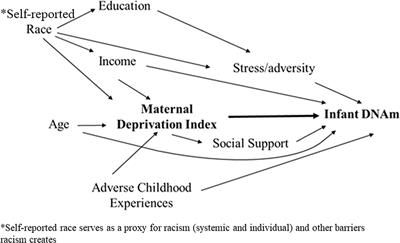|
Anapafseos 5 Agios Nikolaos 72100,Crete,Greece,00302841026182,00306932607174,alsfakia@gmail.com
Blog Archive
- ► 2022 (3010)
- ► 2021 (9899)
-
▼
2020
(4138)
-
▼
November
(1979)
-
▼
Nov 26
(113)
- Proton pump inhibitor utilisation and potentially ...
- Assessing the safety and pharmacokinetics of the a...
- Longitudinal cohort study of the impact of special...
- Individualised physical exercise training and enha...
- Prompt closure versus gradual weaning of external ...
- Nurse-led, screening-triggered, early specialised ...
- Clinical and economic impact of intensive care uni...
- Is long-bout sedentary behaviour associated with l...
- Impact of the zero-mark-up drug policy on drug-rel...
- Laryngopharyngeal reflux
- Cáncer de Hürthle
- In situ pepsin-assisted needle assembly of magneti...
- DWI cerebellar infarct volume as predictor of outc...
- Multiple cranial nerve enlargement in Charcot-Mari...
- Impact of oral textures on aspiration and changes ...
- Blastic Plasmacytoid Dendritic-Cell Neoplasm
- Validity of Soprolife camera and Calcivis device i...
- Sequestration of eIF4A by Angiomotin: a novel mech...
- Directed induction of alveolar type I cells derive...
- Osmo- and cryotherapy of sugarcane ( Saccharum spp...
- Occurrence of granulovirus infecting Cydia pomonel...
- Onyx versus coil embolization for the treatment of...
- Estimation of Iron Content and Its Contribution in...
- Sedum sarmentosum Total Flavonoids Alleviate Schis...
- A Microcosmic Syndrome Differentiation Model for M...
- GPM6B Inhibit PCa Proliferation by Blocking Prosta...
- Inflammatory-Related Clinical and Metabolic Outcom...
- Modeling Drivers’ Stopping Behaviors during Yellow...
- Interleukin-18 Is a Prognostic Marker and Plays a ...
- Multimodular Assessment of a Traumatic Bone Cyst O...
- Occurrence of Gastrointestinal Parasites in Small ...
- Comparison of the Efficiency of Two Novel Guided B...
- Prevalence, Associations ,Knowledge, and Practices...
- Predicting the Incidence and Prognosis of Bone Met...
- An Individualized Intra-Articular Stabilization De...
- Blood Donation Practice and Associated Factors
- Detection of Viruses by Multiplex Real-Time Polyme...
- Fuzheng Huayu Recipe Prevented and Treated CCl4-In...
- The Neutrophil Percentage-to-Albumin Ratio as a Ne...
- Mixed Large Cell Neuroendocrine Carcinoma of the O...
- Cardiogenic Shock Secondary to Dynamic Left Ventri...
- Mechanism by which TRAF6 Participates in the Immun...
- Ischemic Colitis after Colonoscopy with Bisacodyl ...
- Prevalence and Antifungal Susceptibility Profile o...
- Prosthetic Valve Candida Endocarditis: A Case Repo...
- Comparison of Macular Choroidal Thickness and Volu...
- Antiproliferative Activity, Proapoptotic Effect, a...
- Social Risk Early Warning of Environmental Damage ...
- Blood Exosomes Have Neuroprotective Effects in a M...
- Prognostic Value of Long Noncoding RNA SNHG12 in V...
- A Validated Method for the Simultaneous Determinat...
- Network Pharmacology-Based Study on the Mechanism ...
- Removal of Fluorescein Dye from Aqueous Solutions ...
- Effects of Dietary Protein Levels on Bamei Pig Int...
- Hydroethanolic Extract from Bridelia atroviridis M...
- Effect of Sheng-Jiang Powder on Gut Microbiota in ...
- The Therapeutic Effect of Active Vitamin D Supplem...
- The Role of Oxymatrine in Amelioration of Acute Lu...
- The Development of Three-DNA Methylation Signature...
- The Nrf2/PGC1α Pathway Regulates Antioxidant and P...
- Neural Model Stealing Attack to Smart Mobile Devic...
- Current and Potential Applications of Artificial I...
- Robot-assisted neurosurgery versus conventional tr...
- The Effect of Laparoscopic Sleeve Gastrectomy on G...
- [News] Carcinogenicity of acrolein, crotonaldehyde...
- [Articles] Global burden of acute lower respirator...
- [Comment] The place for remdesivir in COVID-19 tre...
- Economic Evaluation of Suture Versus Clip Anastomo...
- Professionals guidance about palliative medicine i...
- Hospital end-of-life care: families free-text notes
- Allocation of funding into blast injury-related re...
- Evaluation of glucose-6-phosphate dehydrogenase (G...
- Release of Mafia-crime prisoners during the COVID-...
- Accidental sulfur mustard exposure from explosive ...
- Unusual presentations of cutaneous larva migrans i...
- Sex-Related Differences in Anxious-Depressive and ...
- Microelectrophysiological Studies of the Ratio of ...
- Acoustic and Perceptual Features of the Emotional ...
- Combined Influences of Genetic Factors and Attenti...
- Effect of Intraoperative Goal-Directed Fluid Manag...
- Post-Stent Ballooning during TransCarotid Artery R...
- Pathways to Enable Primary Healthcare Nurses in Pr...
- Associations Between Maternal Community Deprivatio...
- Code-Sharing in Cost-of-Illness Calculations: An A...
- Epidemiology and public health response in early p...
- Serology- and PCR-based cumulative incidence of SA...
- Where has all the influenza gone? The impact of CO...
- Fully-customized distraction assembly for maxillof...
- Routinely collected patient data in neurology rese...
- Vestibular rehabilitation in multiple sclerosis: s...
- A distinct neuromelanin magnetic resonance imaging...
- Respiratory syncytial virus prophylaxis for preven...
- The neuropsychological assessment battery (NAB) is...
- The neuropsychological assessment battery (NAB) is...
- EFFICACY PROFILE AND SAFETY IMPLICATIONS OF VERY L...
- Ca19.9 positivity and doubling time are prognostic...
- Gut microbiota may play a significant role in the ...
- The Psychology of Giving Thanks
- Psoriasis and Comorbidities
- Secukinumab for the Treatment of Inflammatory Skin...
-
▼
Nov 26
(113)
-
▼
November
(1979)
- ► 2019 (2429)
Αλέξανδρος Γ. Σφακιανάκης
Thursday, November 26, 2020
Associations Between Maternal Community Deprivation and Infant DNA Methylation of the SLC6A4 Gene
Subscribe to:
Post Comments (Atom)



No comments:
Post a Comment